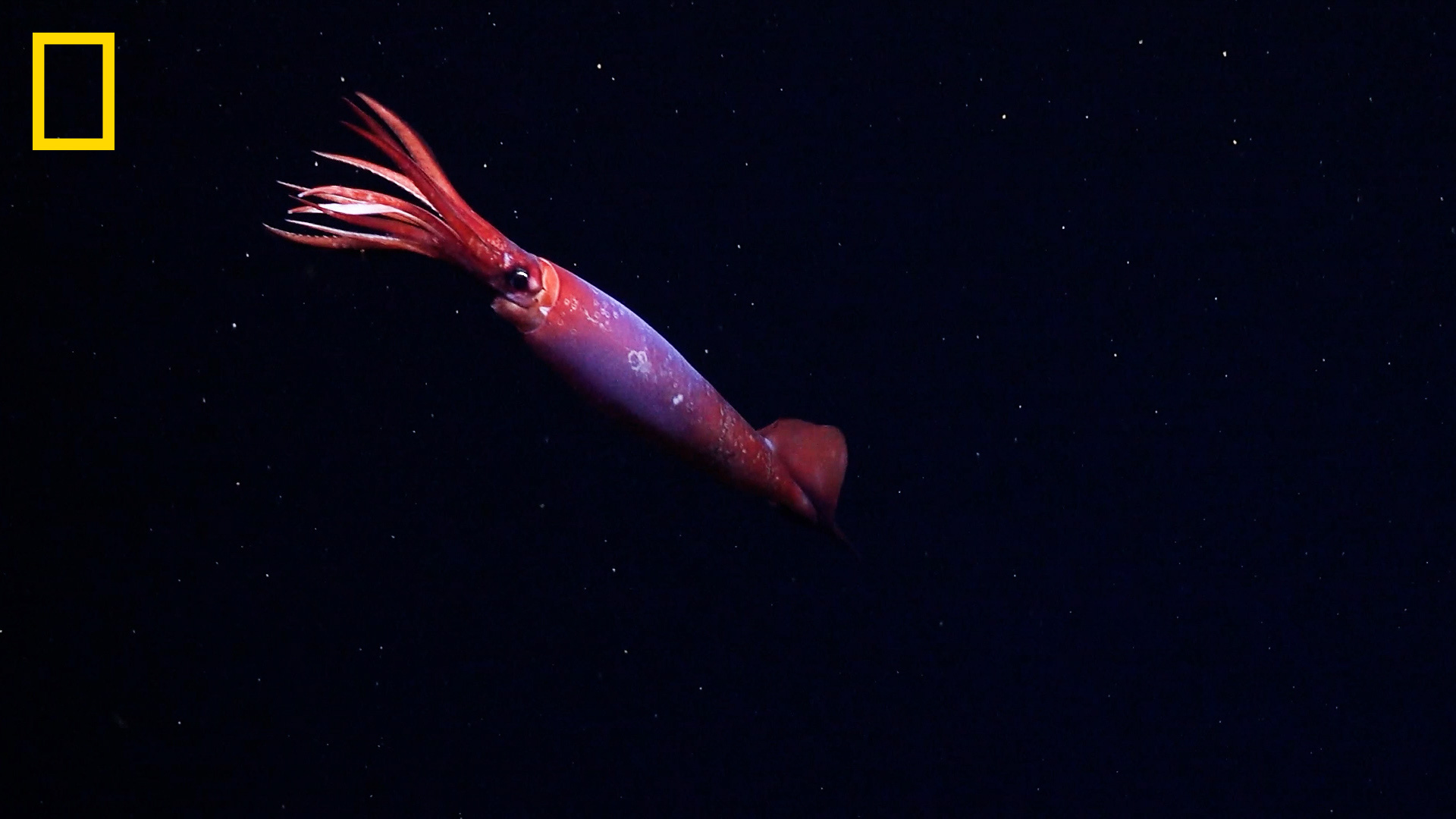Oceanographers on an excursion in the Southern Ocean captured a chance, unprecedented encounter with a sizable deep-sea squid. While piloting a remotely operated submersible 7,000 feet below the ocean surface from aboard the Schmidt Ocean Institute’s research vessel Falkor (too), experts glimpsed a three-foot-long Gonatus antarcticus specimen. But according to National Geographic’s announcement, the team wasn’t even supposed to be in that location when they stumbled across the elusive cephalopod.
“The ice blocks were moving so fast, it would put all the ships in danger, so we had to rearrange everything,” said Manuel Novillo, a researcher at the Instituto de Diversidad y Ecología Animal.
Novillo and his crewmates working on the National Geographic and Rolex Perpetual Planet Expedition originally intended to remotely explore the Powell Basin, an uncharted 9,400-foot-deep abyssal plain near Antarctica, on Christmas Eve last year. Inclement conditions and dangerous ice floes forced a change in plans. To cut their losses, researchers instead traveled to an outer edge of the Basin the following day to see what they could find.

The last-minute itinerary shift proved more surprising than anyone aboard Falkor (too) expected. Novillo noticed a shadowy figure near the vehicle’s camera as they guided the submersible deeper into the sunless depths early the next morning, and asked the pilot to try getting a closer look.
“Voilà, it appeared,” he recounted.
Novillo and colleagues were initially unsure about the exact species of squid. But whatever it was, it seemed as surprised to see the submersible as its operators were to find it—the squid…
Read the full article here

